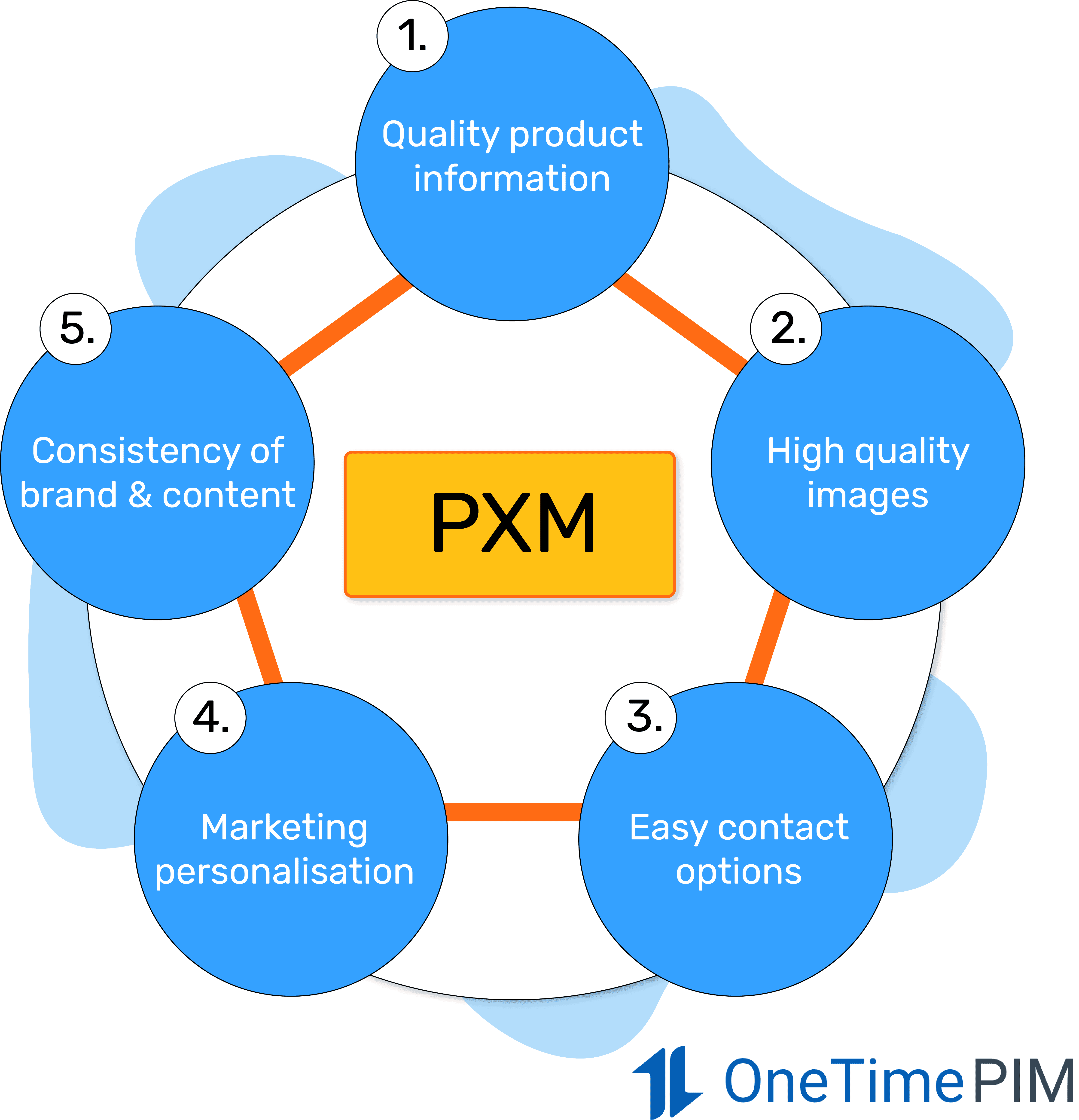What is Product Experience Management (PXM)?
PXM is the concept of creating a great experience for customers when browsing, researching and purchasing your products, by delivering high-quality information and messaging.
It can mean a whole range of things coming together to inform a buyer about your product and remove the barriers to sale, let's take a look at some of them:

1) Quality product information about each product
An absolute cornerstone of a good customer experience is having detailed, accurate and quality information about every product on sale. Not only that, but the information needs to be nicely laid out and easy to locate.
Consumers aren't interested in purchasing from a company with poor information about their products. That gives them no confidence in the business.
2) High-quality images of products
Nothing destroys trust in the quality of a company's product like a pixelated photo on the selling page.
'If they can't even get a good photo of it, how are they going to make a quality product?'
To be able to make an informed purchase, a customer needs to be able to see the item with high-quality photos. There's no doubt that businesses that provide these photos are giving their buyers a better product experience.
3) Easy contact options
This is more important for some businesses than others. With highly technical or expensive products, customers may have a lot of questions. To enhance the customer experience on the product side and meet the needs of certain people, your business needs to be contactable.
This is also an effective way of building trust with a customer who values speaking with other people before buying.
4) Marketing personalisation
The more your marketing and product information can speak to your target market on an individual level, the better the experience. This could be something like displaying information in your target customers' first language. Or launching effective remarketing campaigns for people you know who have browsed certain products.
5) Consistency of brand image and content
Consistency of your brand across all marketing channels is a key part of building a great customer experience. It builds trust and credibility, which in turn makes potential customers more confident about doing business with you.
Why is PXM beneficial to my company?
When a company manages its customers' experience well at a product level, it removes their objections. That increases the likelihood of a sale.
Think about any time you've had a good experience in the past. Firstly, it means you're likely to want to repeat the experience (which in this case, is customers making a repeat purchase). Secondly, you're more likely to tell people about it and advocacy is the best form of marketing.
The happier you can make potential buyers as they explore your products, the more likely they are to return and spread nice words about your company. Which ultimately increases the bottom line.
So how do you maximise your PXM?
The best thing about product experience management is that it's all under your control. It's just about making the products and their data look great to each customer.
For the product information and images, this data can be difficult to keep on top of if you have thousands of SKUs. Implementing a good PIM (Product Information Management) system like OneTimePIM can play an essential role in maximising your PXM.
These systems can store and automatically distribute your product information to sales channels. Your customers will always have detailed, accurate information. You also won't spend all your time keeping on top of it.
These systems are also able to store information in many languages. So more customers are given a more personal product experience.
Implementing a targeted remarketed campaign can also help give buyers a personal experience. Tools like Google Ads can target specific ads at users to a specific page.
These days online is such a crucial part of any business, whether it's a retailer or manufacturer. Companies that are looking to the future and understand the importance of PXM in building loyalty from customers are certain to be the same companies that are thriving in years to come.
